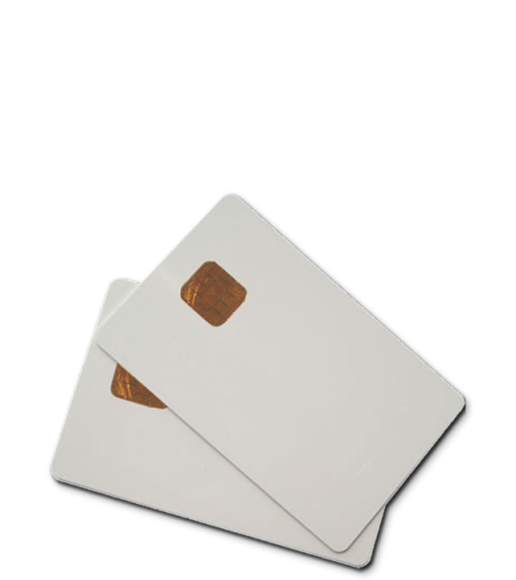The smart card: a simple idea that revolutionised our everyday lives

Putting an electronic chip on a rectangular piece of plastic may seem like the simplest idea on the little card measuring a few centimetres in width and length, and a bare millimetre in thickness, usually made from PVC or polypropylene. However, many tests were needed to comfortably nestle the component into its surrounding structure.
The card had a transformative effect on relations between individuals and commercial, financial, judicial and administrative entities. In just a few decades, the plastic card became an easy-to-use interface between individuals and organisations and would soon almost become the de facto payment method.
A portable memory was described by a British engineer in 1947: a Bakelite substrate onto which are printed very fine copper tracks which, once subjected to a significant electrical current, are irreversibly volatilised, creating a memory effect. At that time, the memory amounted to 64 bits.
For many, it all started when Roland Moreno invented the memory card in 1974. However, history has not forgotten other contributors such as Frenchman Michel Ugon who patented the microprocessor card in 1977, German national Jürgen Dethloff from Giesecke & Devrient who invented an automatic card, American national Paul Castrucci from IBM, and Japanese national Kunitaka Arimura.
The purpose of the smart card is to contain secure data on an easy-to-use card. To this end, the chip includes memory (RAM and ROM) p, which information can be stored, a microprocessor to process the information (protection, reading and modification) and an interface between the card and a device able to read the data on it.
The first smart cards (telephone cards and parking cards) were "passive": all of the operations were carried out by the external reader. Developments in microprocessor technology gave smart cards more abilities, such as encryption in particular, making them "active" cards.
Increasing numbers of applications have been found for smart cards over the years, and they have become omnipresent in our daily lives: payment cards (telephone cards, bank cards), loyalty cards, identification cards (SIM cards, public transport cards, secure badges).
Although reading a card still often requires a dedicated reader (electronic payment terminals, for instance), the new trend is "contactless" cards: the card and the terminal exchange data using a radio signal with a range of a few centimetres (NFC technology) to a dozen metres (RFID).
At the same time, smart cards are used in secure administrative documents such as identity cards, passports, visas, driving licences, and more, while the applications for the chips found in smart phones continue to multiply (payment terminal, flash codes, etc.). With the advent of the "Internet of Things", phones and many other types of everyday objects will be able to make the most of the many capabilities of electronic chips.
In 2015 alone, close to 8.8 billion smart cards were manufactured around the world! The chip has not ceased to evolve, and many efforts have been made to miniaturise the visible portion, as well as the contact plate underneath. Current chips are more high-tech than ever before, and offer more advanced security features.





